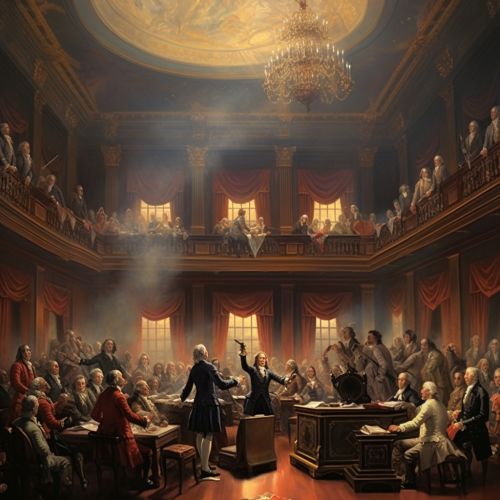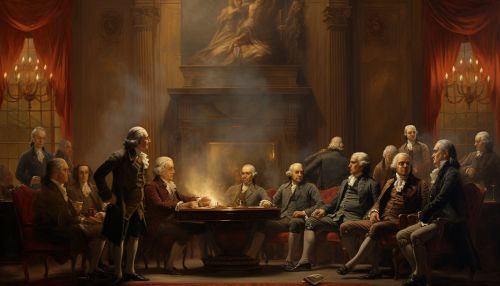Constitution of the United States
Origins and Historical Context
The Constitution of the United States is a foundational document that outlines the structure, functions, and limitations of the federal government. It was drafted in the summer of 1787 by a group of delegates to the Constitutional Convention, held in Philadelphia, Pennsylvania. The Convention was convened in response to widespread dissatisfaction with the Articles of Confederation, the first constitution of the United States, which had proven inadequate in providing a strong and effective national government.


The drafting process was characterized by intense debate and compromise. Key issues included the balance of power between large and small states, the structure of the legislature, the nature and extent of executive power, and the question of slavery. The resulting document was a compromise that sought to balance the need for a strong central government with protections for state sovereignty and individual rights.
Structure and Content
The Constitution consists of a preamble and seven articles, each addressing a different aspect of the federal government or the process of constitutional amendment. The Preamble sets out the general purposes and guiding principles of the Constitution, stating that the government is established by the people to "form a more perfect Union, establish Justice, insure domestic Tranquility, provide for the common defence, promote the general Welfare, and secure the Blessings of Liberty to ourselves and our Posterity".
Articles I, II, and III establish the three branches of the federal government: the legislative, executive, and judicial branches, respectively. Article IV deals with the relationship between the states and the federal government, while Article V outlines the process for amending the Constitution. Article VI contains the supremacy clause, which establishes the Constitution as the supreme law of the land, and Article VII provides for the ratification of the Constitution.
Key Principles
The Constitution embodies several key principles of governance, including federalism, separation of powers, checks and balances, and the protection of individual rights.
Federalism refers to the division of power between the federal government and the states. The Constitution grants certain powers to the federal government, reserves others to the states, and shares some powers between the two. This system allows for a degree of autonomy at the state level while ensuring a unified national policy in areas of common concern.
Separation of powers is achieved by dividing the powers of government among three co-equal branches. The Congress makes laws, the President executes them, and the courts interpret them. This structure is intended to prevent the concentration of power and provide for checks and balances.
Checks and balances are mechanisms that allow each branch of government to limit the powers of the other branches. For instance, the President can veto legislation passed by Congress, but Congress can override a veto with a two-thirds majority in both houses. Similarly, the courts can declare laws passed by Congress or actions taken by the President to be unconstitutional.
The Constitution also includes provisions for the protection of individual rights, most notably in the Bill of Rights, the first ten amendments to the Constitution. These rights include freedom of speech, religion, and the press; the right to bear arms; protections against unreasonable searches and seizures; and the right to a fair trial.
Amendments
The Constitution has been amended 27 times since its adoption. The first ten amendments, known collectively as the Bill of Rights, were ratified in 1791, just four years after the Constitution itself. They were followed by seventeen more amendments, addressing a wide range of issues from the abolition of slavery to the right to vote.
The amendment process, outlined in Article V, requires the proposal of an amendment by a two-thirds majority in both houses of Congress or by a convention called by two-thirds of the states, followed by ratification by three-fourths of the states. This process ensures that amendments reflect a broad consensus and are not easily made, preserving the stability and continuity of the constitutional order.
Influence and Legacy
The Constitution of the United States has had a profound influence on the development of constitutional law and democratic governance around the world. It was one of the first written constitutions and remains one of the oldest still in force. Its principles of federalism, separation of powers, and protection of individual rights have been widely adopted and adapted in other countries.
The Constitution has also been the subject of ongoing interpretation and debate. The Supreme Court has played a crucial role in this process, interpreting the Constitution in a wide range of cases and controversies. These interpretations have shaped the understanding and application of the Constitution over time, reflecting changes in societal values and political circumstances.
